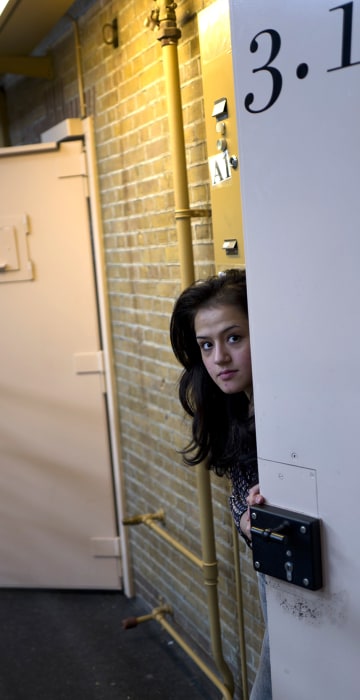
Photo
Dutch Prisons Become Welcoming Homes for Refugees
Amid the huge flow of migrants into Europe, several unused Dutch prisons have been temporarily used as asylum seeker centers.
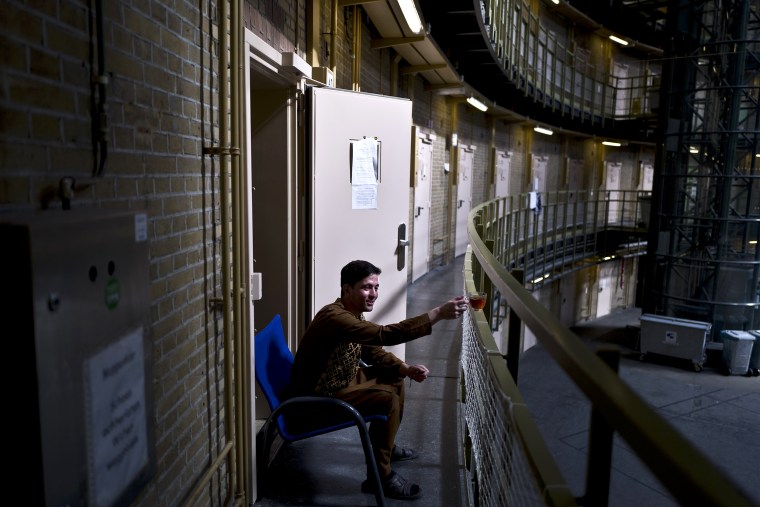
Afghan refugee Siratullah Hayatullah drinks tea by the doorway of his room at the former prison of De Koepel in Haarlem, Netherlands.
With crime declining in the Netherlands, the country is looking at new ways to fill its prisons. The government has let Belgium and Norway put prisoners in empty cells and now, amid the huge flow of migrants into Europe, several Dutch prisons are being used temporarily as housing for asylum-seekers.
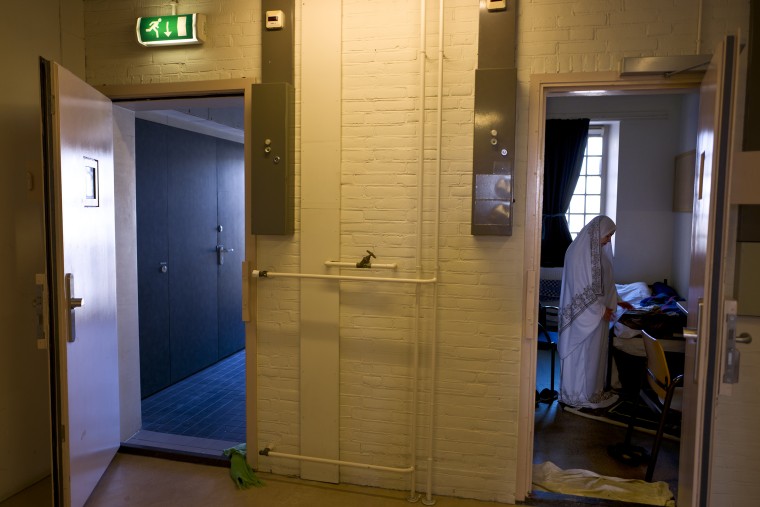
Iraqi refugee Fatima Hussein prays inside her room at the former prison.
Most of the 12 former prisons and jails housing asylum seekers have been so transformed that they are barely recognizable as former places of involuntary detention, though in some cases the thick cell doors and bars on windows are stark reminders of the past.
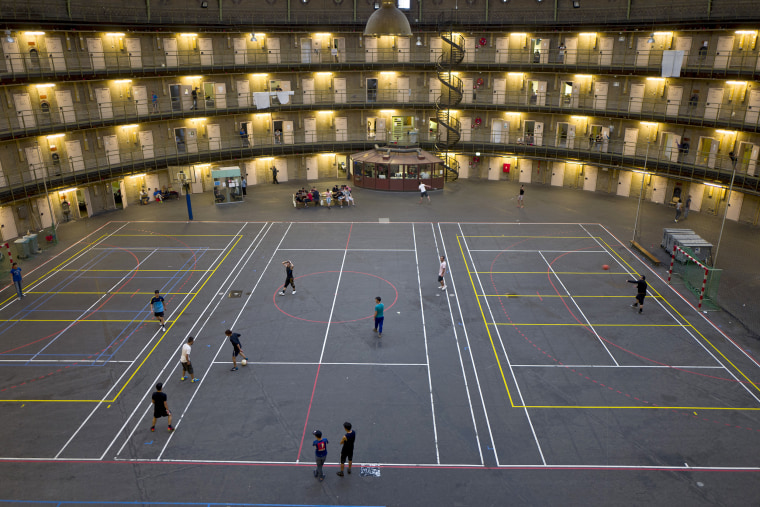
Refugees and migrants play football at the former prison courtyard of De Koepel.
Prisons in the cities of Haarlem and Arnhem, with their distinctive domed roofs and circular galleries of cells around a central covered courtyard, are considered national monuments and cannot be renovated.

Afghan refugee Shazia Lutfi peeks through the door of her room, a former prison cell.
"We had to think twice about using prisons with (cell) doors," said Janet Helder, a board member with the Dutch government agency responsible for housing asylum seekers.
"Some people in the neighborhood asked, 'how can you put people from Syria who may have been imprisoned there in a cell here?' So we decided that if people really have a problem with it we will find somewhere else for them."
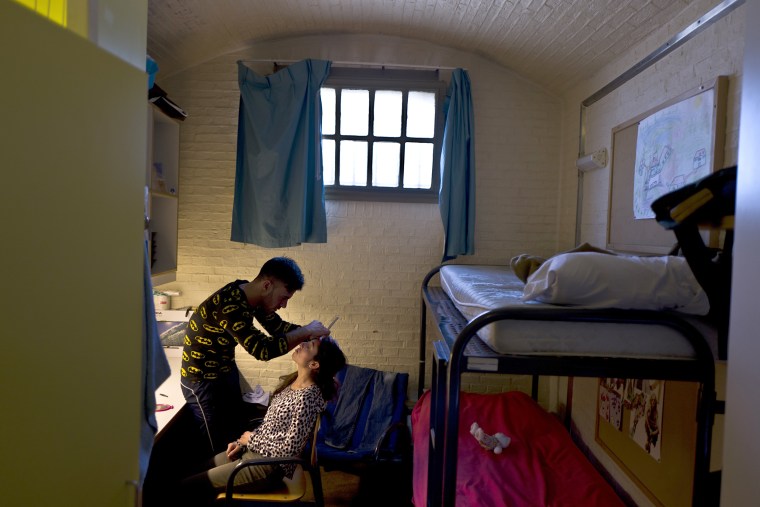
Yazidi refugee Yassir Hajji from Sinjar, Iraq, was a barber back home and wants to learn Dutch so that he can pick up his trade again. He keeps his skills sharp by giving Gerbia, his wife, an eyebrow shaping in the cell they share on the third floor of the Haarlem prison.
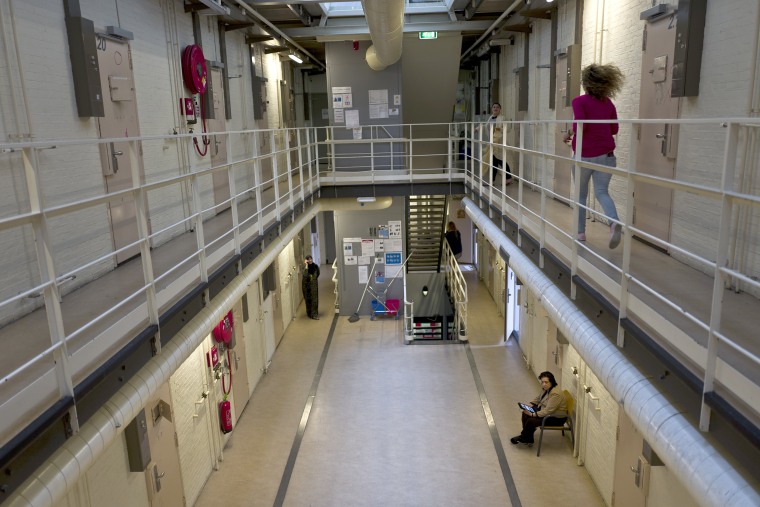
A migrant sits outside her room while another runs in the corridor of the women section of the former prison.
The prisons often are well suited to their new use, Janet Helder said. Her organization currently is housing some 41,000 people at 120 locations throughout the Netherlands.
"The rooms are intended for one or two people, there are often gyms, a good kitchen," she said. "So in that sense they tick many of the boxes we are looking at."
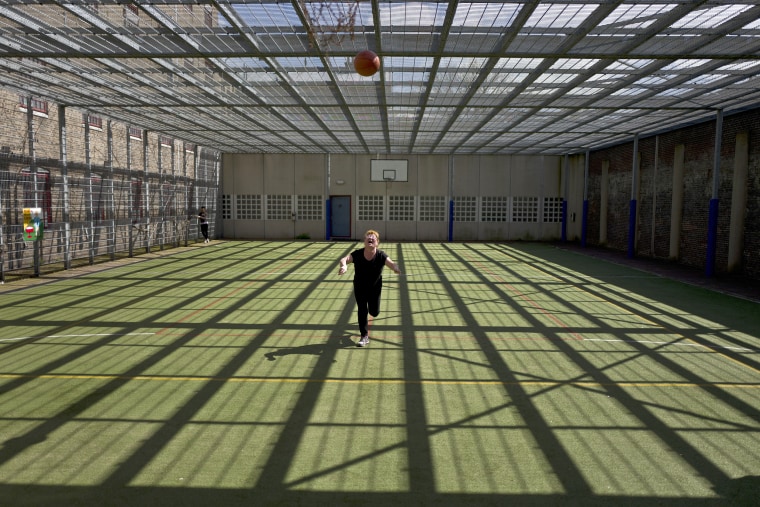
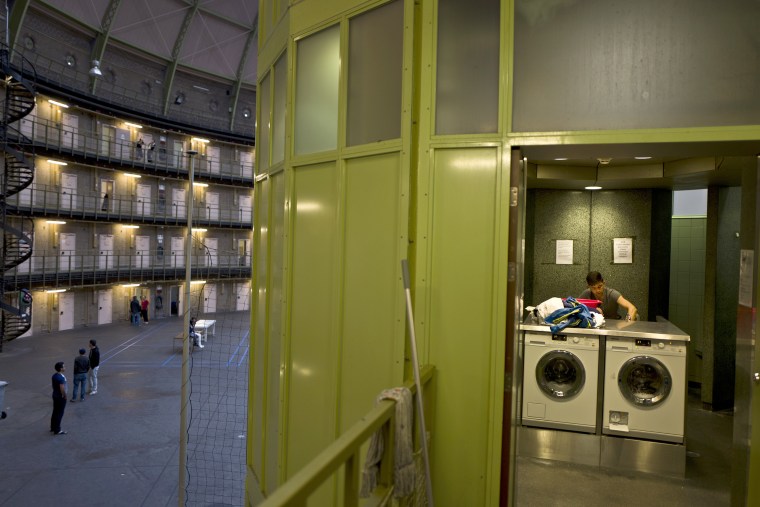
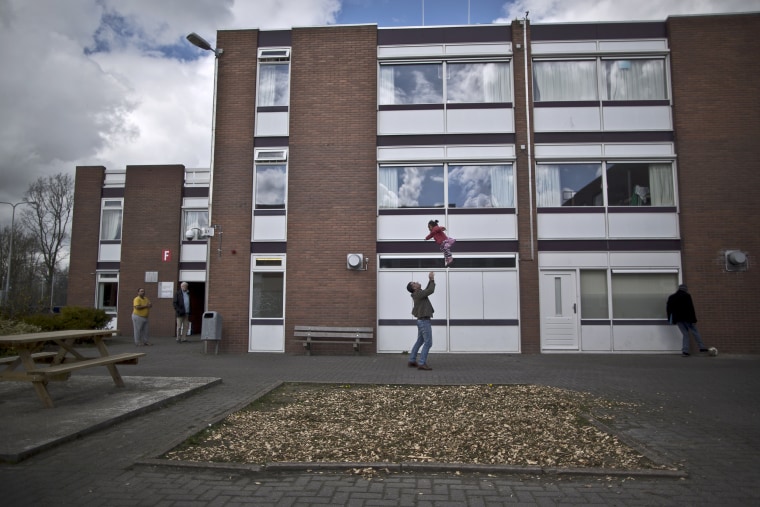
A migrant plays with a girl at the former prison of Westlingen in Heerhugowaard northwestern Netherlands.
Asylum seekers who spoke to The Associated Press during recent visits to the prisons had few complaints beyond gripes about the food. While they live in prisons, they are free to leave the buildings and grounds during the day and even spend some nights away.
Abdul Moeen Alhaji, a 16-year-old Syrian, is happy to call a prison cell home after initially staying in a tent in a temporary camp outside the city of Nijmegen. "I don't feel that it is a prison," he said. "What matters is that we are safe here"
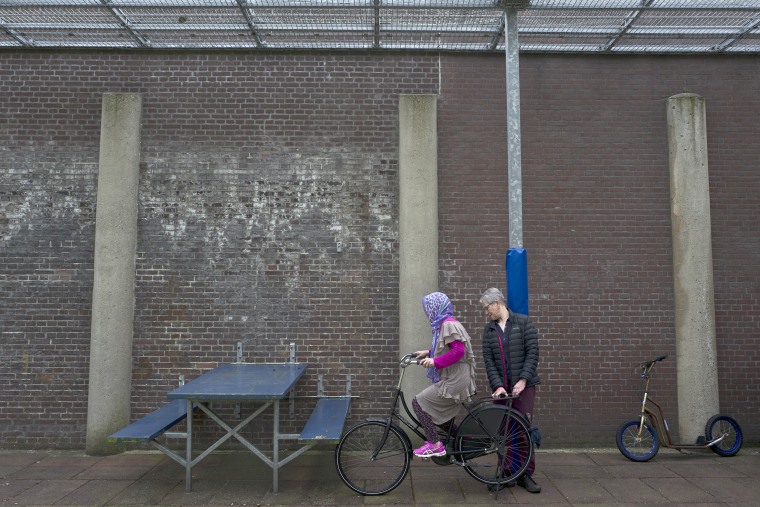
A Dutch volunteer teaches an Afghan refugee woman how to ride a bicycle at a yard in the former prison.
Menno Schot, who runs the center in the Haarlem prison, said staffers try to help the 400 migrants adapt to Dutch life as they wait for the lengthy asylum process to start.
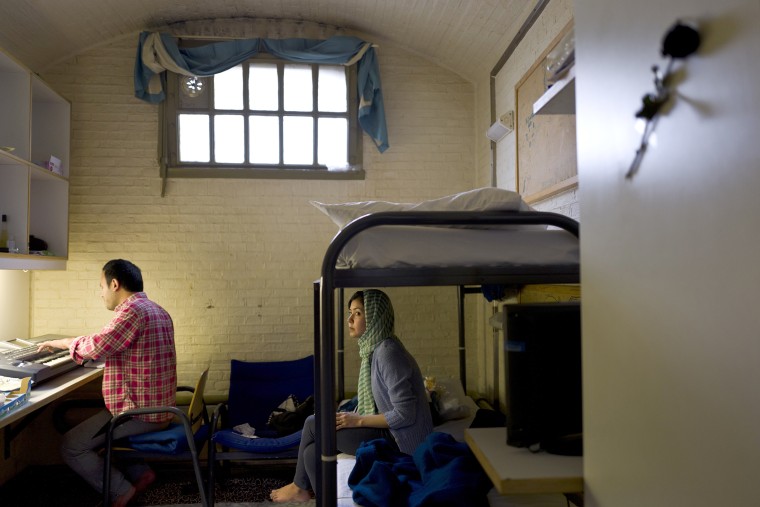
Hamed Karmi plays a keyboard while his wife, Farishta Morahami, sits on the bunk bed in their cell listening to the music. It's a calming way to spend a few minutes for the young couple who fled a village near the Afghan capital, Kabul, amid rising Taliban attacks. They paid smugglers $8,000 to get to Europe.
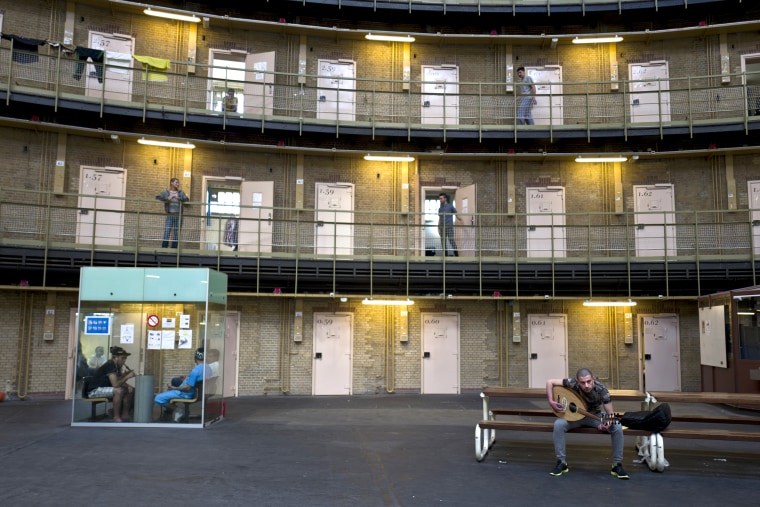
Syrian refugee Fadi Tahhan sings while playing Oud at the former prison of De Koepel in Haarlem, Netherlands.
"Their safety is our main priority along with their health and daily needs," Menno Schot, who runs the center in the Haarlem prison, said of the prison's new residents. "The country is new for them so we are their guide in Holland."